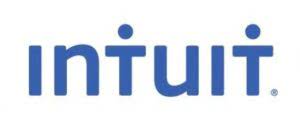
At some point in a business owner’s journey, it’s likely they will need to secure additional financing to help it operate or grow. Non-recourse factoring, in theory, releases your firm from any responsibility in the case https://efectofuzz.com/accrual-definition-journal-entry-examples/ of non-payment. Yet even when invoice factoring companies advertise this option, customers rarely can afford the extremely high premium.
Which Industries Use Invoice Factoring?
This rate typically ranges from 1% to 5% of the invoice value monthly, depending on several factors. Factors influencing the discount rate include the creditworthiness of the customer, the type of factoring arrangement (recourse or non-recourse), and the specific terms of the invoice. For example, let’s say you sell $15,000 worth of invoices to a factoring company with a 90% advance rate and a 2% factoring rate. You will receive $13,500 upfront and $1,200 after the invoice is paid, but this service will cost you $300 in total. Another example involves a company that factors $100,000 in invoices at a 5% rate, receiving $95,000 in immediate cash.
Invoice factoring rates
Keeping an eye on cash flow is crucial when Outsource Invoicing you offer credit to your customers. Bankers Factoring (Bankers) also has an Invoice Factoring FAQ for all factoring terminology and definitions. Small businesses use invoice factoring to quickly get money for their work, manage their accounts receivable, and protect their credit. Sometimes, people use the words “invoice factoring” and “invoice financing” to mean the same thing, but they’re a bit different.

How we chose the best factoring companies
The entire process, from selecting a factoring company to receiving funds, can take about a week. This efficiency allows businesses to quickly convert their receivables into cash, addressing immediate financial needs and stabilizing cash flow. The factoring business authenticates your invoices, advances up to 90% of the invoice face value, and then pursues payment from your clients directly for those invoices. The remaining invoice value is released to you after the factor receives payment from the final consumer.
- Aggressive debt collection can harm your reputation, and delayed customer payments can quickly rack up costs, outweighing the benefits of quick cash.
- Checking a factoring company’s credentials, customer feedback, and industry standing is essential for ensuring reliability.
- We do not include the universe of companies or financial offers that may be available to you.
- However, most businesses can apply invoice factoring successfully to their funding model.
- We do NOT want to recommend a service that is not a perfect fit – we are looking to build a long-term relationship.

Some include if you sell to other businesses, if you have creditworthy customers, and if you have over $5,000 in sales each month. In some instances, invoice factoring can also get referred to as debt factoring or accounts receivable factoring. Convert unpaid invoices into immediate working capital to cover expenses, invest in growth, and maintain smooth operations. While factoring invoices does come with a fee, the exorbitant price tag many think factoring comes with simply isn’t there. Factoring costs are competitive and usually more reasonably priced than other financing options, with faster approval time as well. There’s no such thing as a free lunch, and that’s true for factoring as well.

This guide will answer all of your questions about invoice factoring, helping you determine if it’s a good fit for your business. The factor checks your invoices, gives you up to 90% of the invoice value, and then handles collecting payments from your customers. You’re still responsible for chasing down payments, and when your customers pay, you need to repay the loan plus any extra fees and interest. When you sell your receivables through invoice factoring it is considered a sale of assets. If you factor in an invoice and it’s unpaid for 42 days, for example, a tiered rate might mean a fee of 2.5%, while a daily rate could be around 2.1%. However, recourse factoring usually comes with lower fees as you take more risk.

The web has also made it possible for factors and their clients to collaborate in real time on collections. Acceptance of signed documents provided by facsimile as being legally binding has eliminated the need for physical delivery of “originals”, thereby reducing time delays for entrepreneurs. This arrangement not only streamlines your operations but also enhances your cash flow without the hassle of chasing payments.

How to Choose the Best Factoring Company
Learn all you need to know about invoice factoring, including the benefits and a guide to how it works. Invoice factoring is available exclusively to B2B operations (enterprises that sell to businesses or the government). Also, it usually requires that you have credit insurance to cover the factor’s risk of potential delinquency. Your customers need to be highly creditworthyto be approved by the insurance agency. After we receive your application, we will request a few documents as part of our underwriting process. An example of documents we need is your business license, proof that you have insurance, and a copy of the invoice(s) being factored for example.
Dealing with Slow-Paying Customers
Invoice factoring is a type of financing that allows businesses to sell their outstanding invoices to a factoring company in exchange for a portion of the invoice amounts upfront. The invoice factoring invoice factoring company—not the original business—is then responsible for collecting payment from customers. Instead of waiting for customers to pay, businesses can receive a portion of the invoice value quickly, helping to improve cash flow and meet immediate financial obligations.
